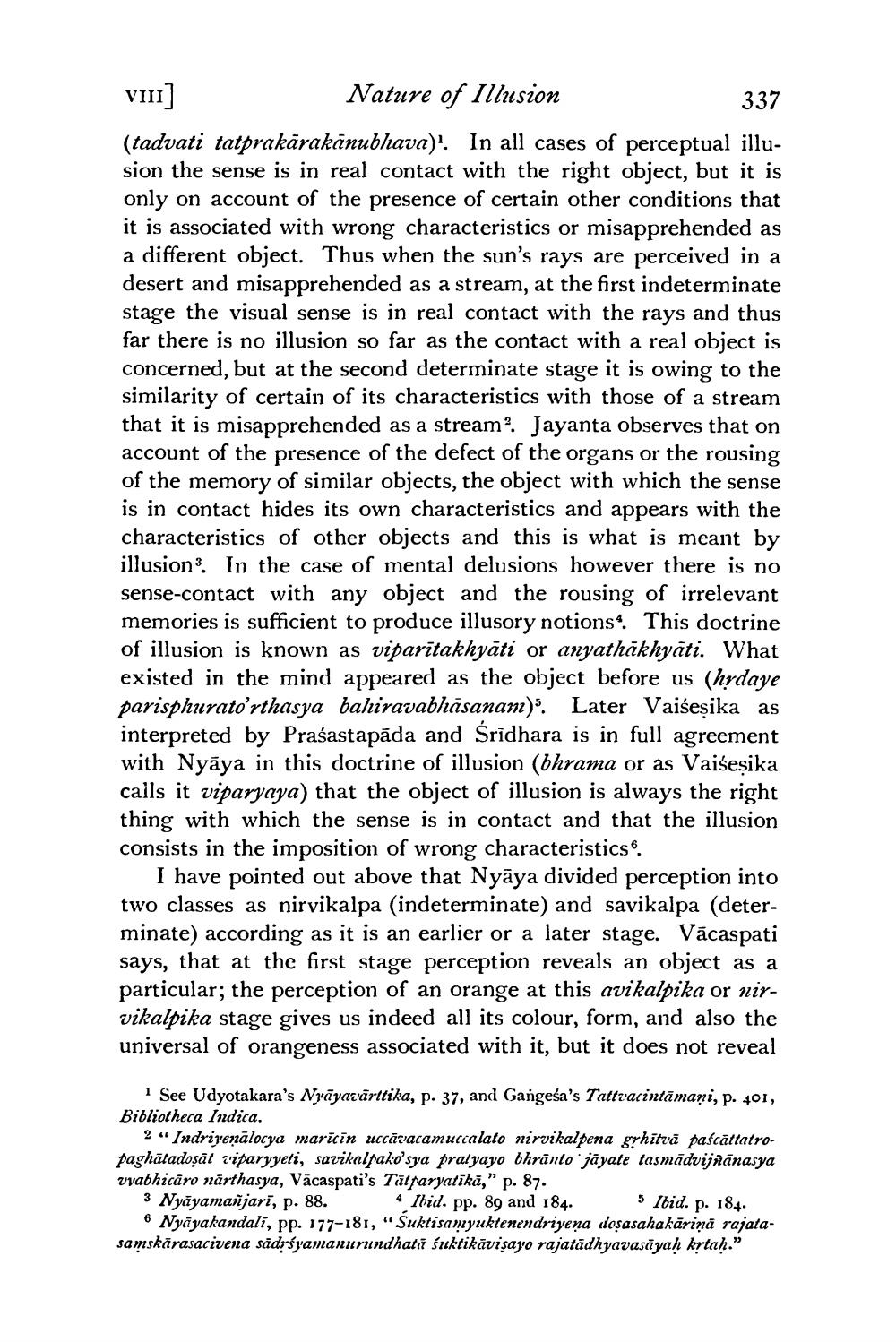________________
VIII]
Nature of Illusion
337
(tadvati tatprakārakānubhava)'. In all cases of perceptual illusion the sense is in real contact with the right object, but it is only on account of the presence of certain other conditions that it is associated with wrong characteristics or misapprehended as a different object. Thus when the sun's rays are perceived in a desert and misapprehended as a stream, at the first indeterminate stage the visual sense is in real contact with the rays and thus far there is no illusion so far as the contact with a real object is concerned, but at the second determinate stage it is owing to the similarity of certain of its characteristics with those of a stream that it is misapprehended as a stream. Jayanta observes that on account of the presence of the defect of the organs or the rousing of the memory of similar objects, the object with which the sense is in contact hides its own characteristics and appears with the characteristics of other objects and this is what is meant by illusion. In the case of mental delusions however there is no sense-contact with any object and the rousing of irrelevant memories is sufficient to produce illusory notions'. This doctrine of illusion is known as viparitakhyāti or anyathākhyāti. What existed in the mind appeared as the object before us (hrdaye parisphurato'rthasya bahiravabhasanam). Later Vaiseṣika as interpreted by Prasastapāda and Śrīdhara is in full agreement with Nyaya in this doctrine of illusion (bhrama or as Vaiseṣika calls it viparyaya) that the object of illusion is always the right thing with which the sense is in contact and that the illusion consists in the imposition of wrong characteristics.
I have pointed out above that Nyāya divided perception into two classes as nirvikalpa (indeterminate) and savikalpa (determinate) according as it is an earlier or a later stage. Vacaspati says, that at the first stage perception reveals an object as a particular; the perception of an orange at this avikalpika or nirvikalpika stage gives us indeed all its colour, form, and also the universal of orangeness associated with it, but it does not reveal
1 See Udyotakara's Nyāyavārttika, p. 37, and Gangeśa's Tattvacintamani, p. 401, Bibliotheca Indica.
2 "Indriyenalocya maricin uccavacamuccalato nirvikalpena grhitvā paścāttatropaghatadoṣāt viparyyeti, savikalpako'sya pratyayo bhrānto jayate tasmādvijñānasya vvabhicaro narthasya, Vacaspati's Tatparyatikā," p. 87. 3 Nyāyamañjarī, p. 88. 5 Ibid. p. 184. Nyayakandali, pp. 177-181, "Śuktisamyuktenendriyena dosasahakāriņā rajatasamskārasacivena sādṛśyamanurundhatā śuktikāviṣayo rajatādhyavasayaḥ kṛtaḥ."
4 Ibid. pp. 89 and 184.




